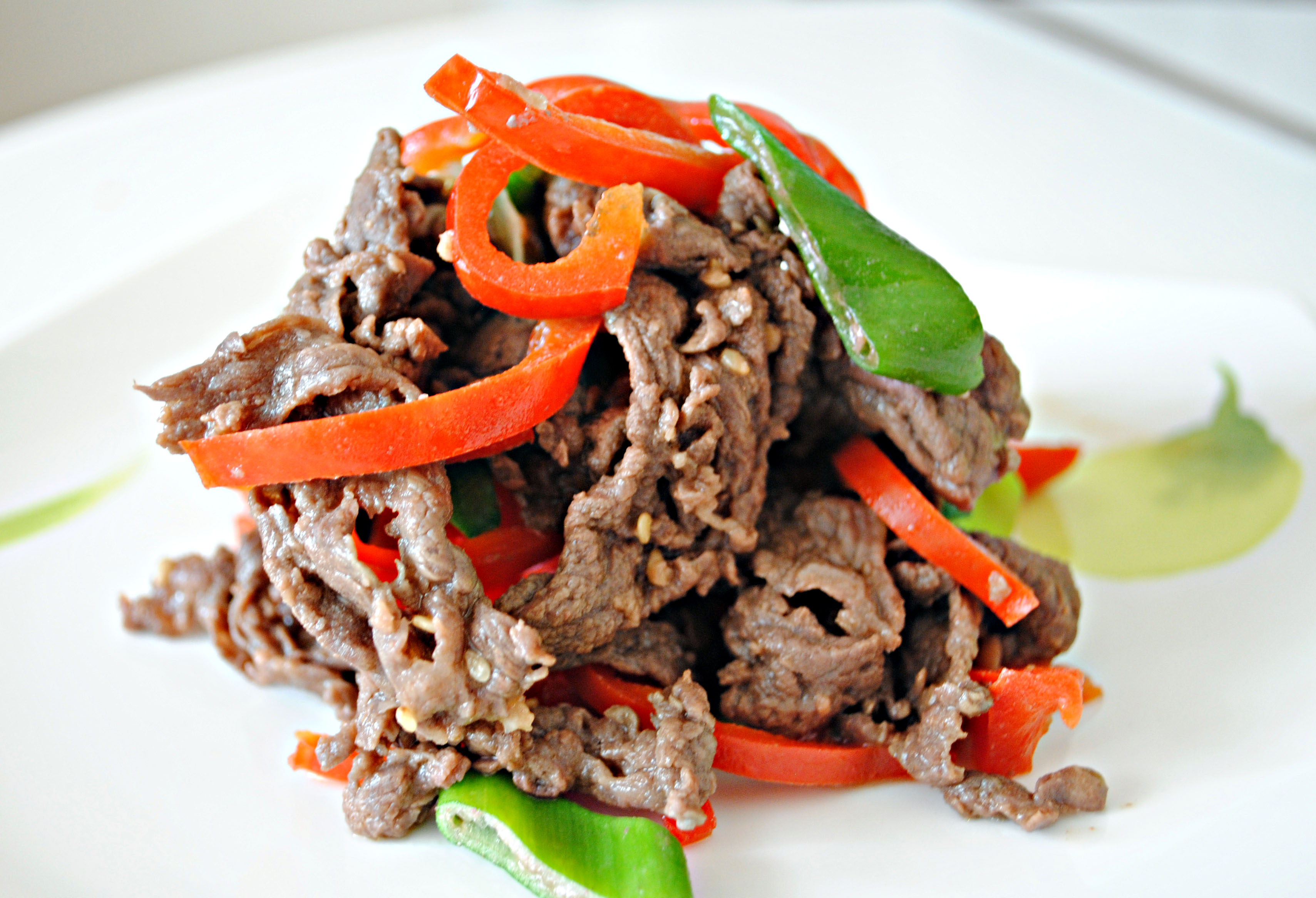Bulgogi “Fire Meat”
Written by Joe Wabe
Bulgogi is one of the most well-known Korean dishes around the world. The word “bulgogi” is even listed in some English-language dictionaries, such as the Merriam-Webster Dictionary and the Oxford Dictionary of English. The name literary means “fire meat,” and according to history, its original version, which originated in North Korea, was grilled on a skewer directly in hot charcoal.
After the liberation of Korea from Japanese occupation, bulgogi became popular in South Korea, especially in Seoul where it was widespread in small restaurants and markets. Many refugees from Pyongan Province in North Korea, from where this dish originated, made it popular when they migrated to the South.
Bulgogi is made of thin, marinated slices of beef or pork grilled on a barbecue or on a stovetop griddle. It is also often stir-fried in a pan at home. During the Joseon Dynasty, the original form of bulgogi was called neobiani (너비아니), which means “thinly spread meat,” and was traditionally prepared especially for the wealthy and the nobility. Today, the recipe has changed from its original form to adapt to the palates of new generations, and the added ingredients vary by region and personal tastes. From bell peppers to wild mushrooms and rice noodles, there is no doubt that bulgogi has evolved to satisfy contemporary needs. But this evolution has not stopped this dish from being one of the top favorites of every Korean and Korean food lover around the globe.
Ingredients (Serves 4-6)
Marinade
6 tablespoons of soy sauce
2 tablespoons of sesame oil
3 tablespoons of brown sugar (or plum syrup)
2 tablespoons of mirin (rice wine) or soju
1/2 an onion
1 tablespoon of minced garlic
1 teaspoon of minced ginger
black pepper
Main
800 grams of any tender prime beef cut (rib eye or top sirloin) thinly sliced
1 large chopped yellow onion
2 stalks of green onion
1/2 a medium chopped carrot
2 red chopped sweet red peppers
3–4 shiitake mushrooms (표고버섯)
1 tablespoon of sesame seeds
Preparation
1. Put the marinade ingredients in a bowl along with the meat, mix well, and let it sit in the fridge for four to six hours or overnight.
2. Preheat the skillet on medium high heat; once heated, add the meat and stir for about three minutes.
3. Add the rest of the vegetables and cook until the meat and vegetables are tender. Reduce the heat and add the sesame seeds last.
4. Serve and enjoy!
The Author
Joe Wabe is an established photographer and Gwangju local business entrepreneur. He has been contributing to the GIC and the Gwangju News for more than eight years.



